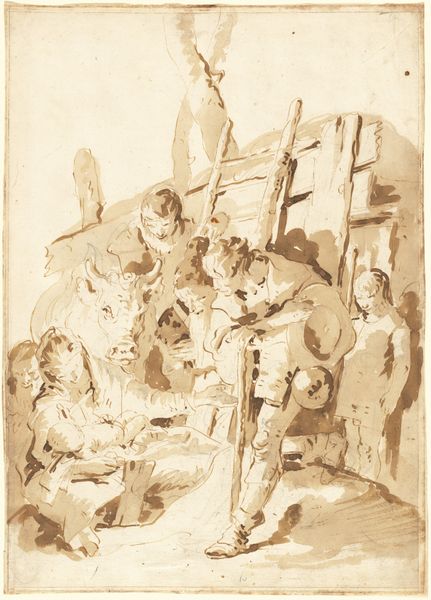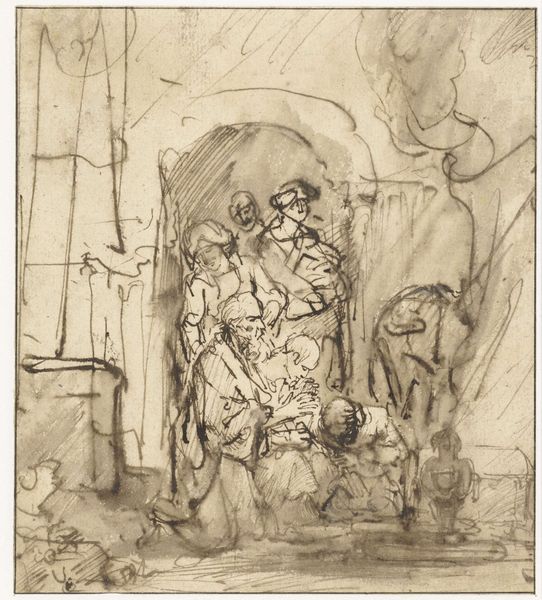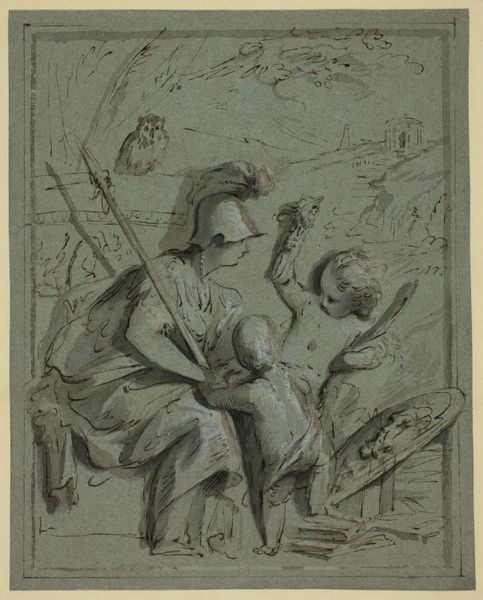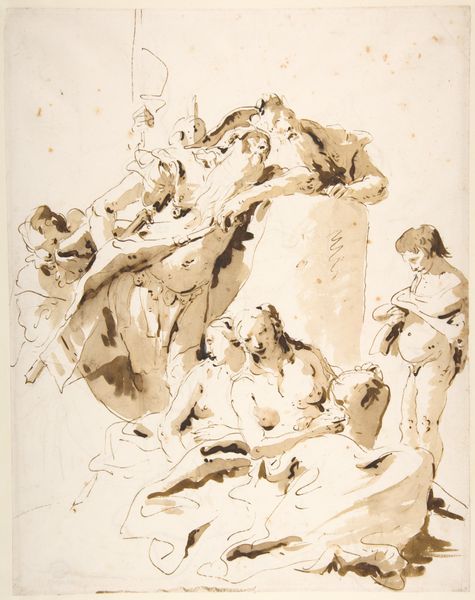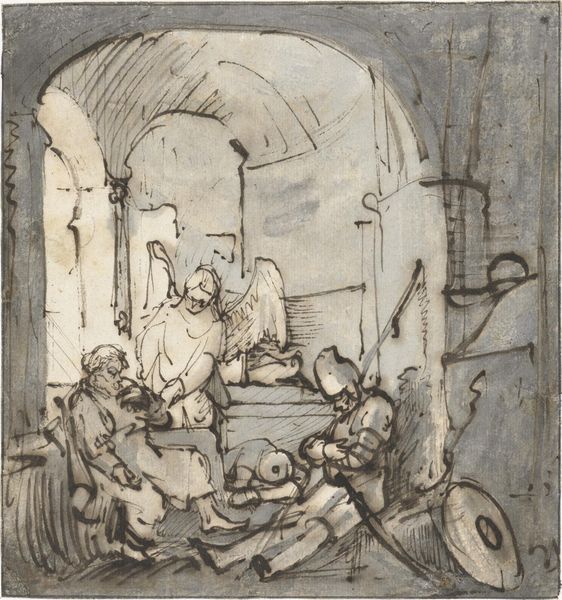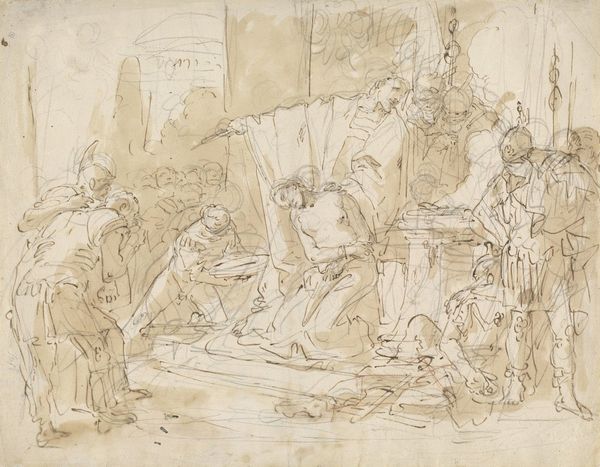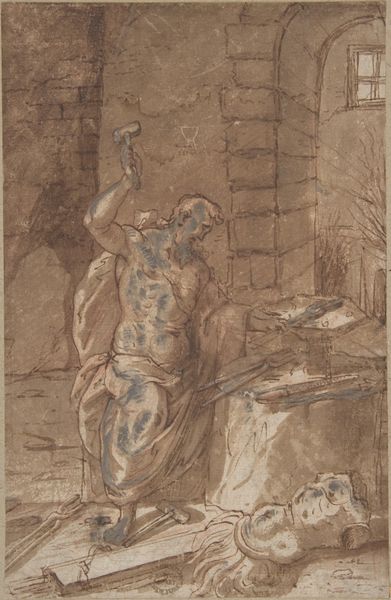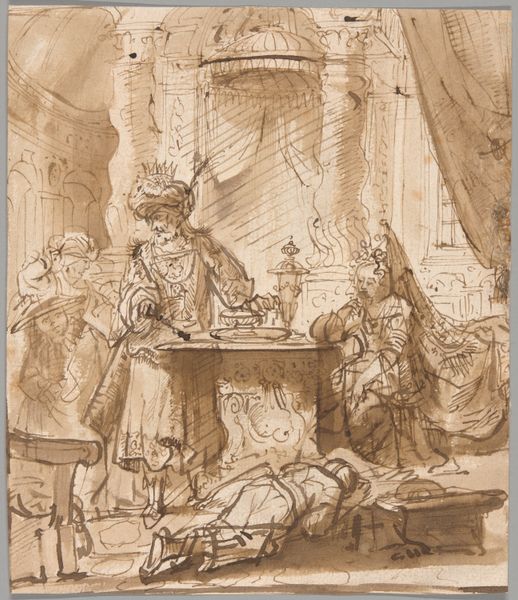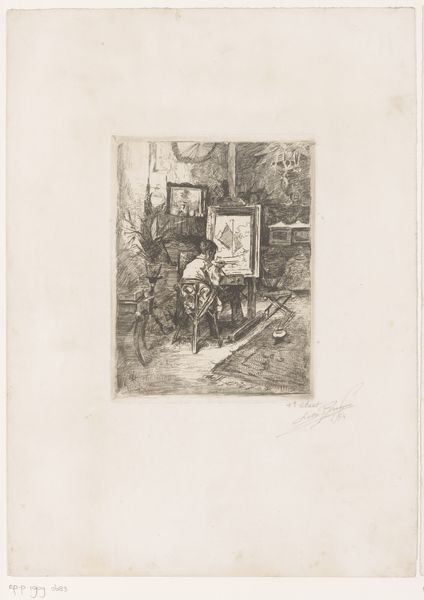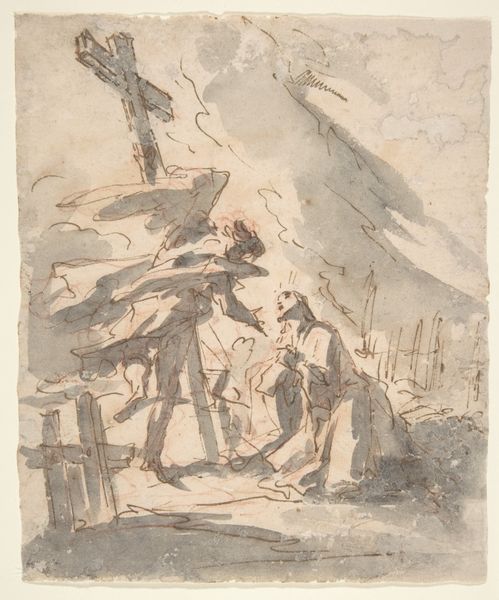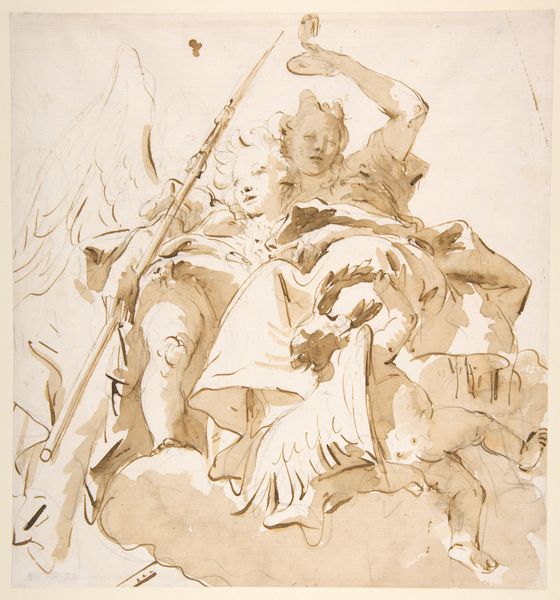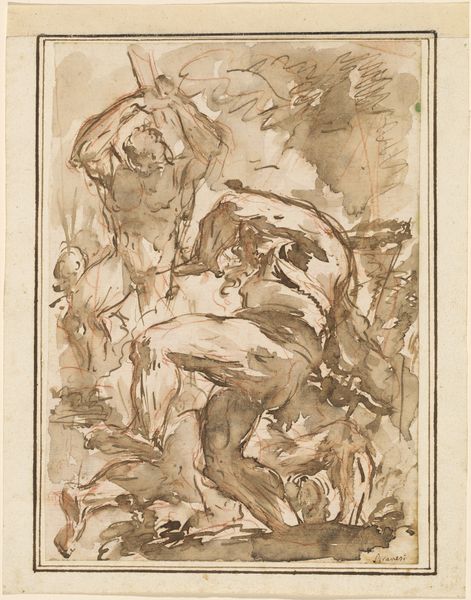
drawing, gouache, ink
#
drawing
#
baroque
#
gouache
#
landscape
#
charcoal drawing
#
oil painting
#
ink
#
history-painting
Copyright: Public Domain
Curator: Before us is "Befreiung Petri aus dem Gefängnis," which translates to "The Liberation of St. Peter from Prison," a drawing by Gaspare Diziani, currently held in the Städel Museum. It's rendered with gouache, ink, and what appears to be charcoal. What is your initial response to this work? Editor: My first impression is one of profound freedom and miraculous escape. The sepia tones create a dreamlike atmosphere. But beyond the visual, it has this feeling of cultural hope for a renewed social and moral sense, perhaps linked to institutional reformations. Curator: An astute observation. If we dissect the composition, we see a masterful use of chiaroscuro. The angel, bathed in a diffused light, guides Saint Peter, creating a visual pathway leading us from the darkness of the prison cell to the potential freedom outside. Note also how the architecture seems secondary, rendered only to highlight the interaction. Editor: Exactly! Diziani employs potent Christian symbolism. The angel is not only a messenger of God but a liberator figure common in baroque iconography. The cell itself symbolizes constraints, physical but also metaphorical – a prison of the soul, if you will. The discarded chains emphasize spiritual as well as corporeal freedom. The gesture, which appears almost accusatory from the Angel seems also like a roadmap to the correct religious practice. Curator: The gestural quality of the lines—the frenetic energy in the angel's wings—imparts a sense of urgency. One could argue this reflects the Baroque aesthetic's penchant for dynamic movement and emotional intensity. Even the positioning of Saint Peter seems secondary to the angel. Editor: It is almost as if Diziani encourages us to think of the Saint not just as a person in a historical moment but as a conduit. By linking this to religious, cultural or philosophical contexts we could reflect how those constraints are to be unlocked or destroyed when enlightenment comes from another, "divine" or other "external" intervention. Curator: An interesting interpretation indeed. This work underscores Diziani's command of visual language to convey not just a narrative, but an allegorical message. Editor: I would have never looked at it like that; I appreciate the light you were able to shed on it. Curator: And I appreciate your insights into the symbology within this piece. I see "Befreiung Petri aus dem Gefängnis" now with renewed eyes.
Comments
No comments
Be the first to comment and join the conversation on the ultimate creative platform.
